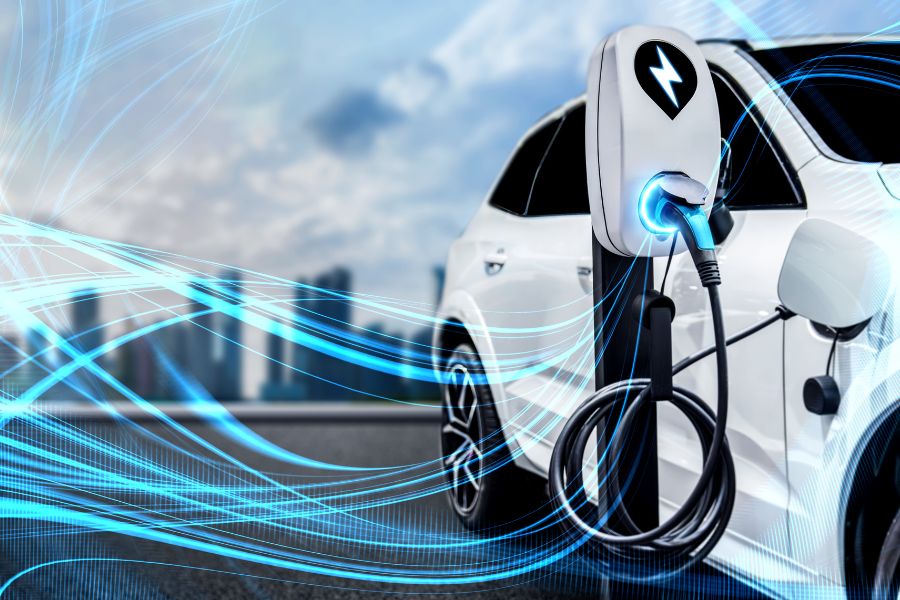The automobile sector is revolutionizing every year. It aims to make the energy sources cleaner and safer. Some countries have already set legal rules about the use of petrol and diesel. So, electric vehicles have become the best alternative to traditional vehicles polluting the environment. Buying a car always involves a significant investment. But, do electric cars cost higher? When the first computers or phones were launched in the market, their prices were unaffordable. This potential reason is also applicable to electric cars. Let us explore the factors causing a higher cost of EVs.
Factors causing a higher cost of EVs
Low competition
The supply-demand level is always the biggest factor affecting the cost of EVs. The EV market currently has only a few brands. As they do not face stiff competition, they have not thought of lowering the price of their EVs. Although many consumers like to buy electric vehicles, the cost often prevents them from making investments.
The cost of EV batteries
Batteries are the main components helping electric vehicles to run. However, it is not fully true that batteries cost higher. Modern tech experts are trying to make batteries cheaper. If the production becomes profitable in the future, the prices will go down. Thus, the battery companies will sell more products. So, in recent years, there has been a drop in the cost of electric vehicle batteries.
Although the battery cost is getting lower, the price of EVs is quite high. Batteries used for EVs are not like AutoZone batteries. Automakers are trying to refine them with effort and investment. The range is the main issue with the electric car. How much distance can the vehicle cover on a single charge? However, car buyers like to have batteries that allow faster charging. They want to send more juice to boost the car’s acceleration.
Lithium-ion batteries used for electric vehicles are quite costlier. It happens due to the materials needed for making these batteries. These batteries are designed using rare metals like nickel and cobalt. The rare metals have to be processed after mining them. Even lithium is not available readily. A battery pack also constitutes more than 30% of the EV’s cost.
The intricate Li-ion battery technology has become the biggest reason behind pushing the cost of the EVs. However, manufacturers are trying to use low-cost alternatives to Li-ion batteries for electric cars.
The cost of intensive research
Electric vehicles have a range of systems different from that of hybrid vehicles and gasoline-fueled cars. So, designing an electric car is almost like dealing with a new project. It is true especially for companies, which design only EVs (Rivian and Tesla). It means the cost of thorough research and manufacturing EVs is higher compared to that of standard vehicles.
That is why the companies include the R&D costs in the price of the EV. As most companies design fewer electric cars, the research costs are higher. But, if more EVs are manufactured in the future, the R&D costs will be comparatively low.
More energy and time for vehicle charging
The exact cost of running an electric vehicle is lower compared to that of a regular car. It is because of the low cost of electricity. However, the energy and time needed to keep the EV charged is significant. So, these are some hidden costs, and most consumers do not consider these factors in their budget.
It takes almost 40 hours to recharge the electric vehicle at the Level 1 charging station. If you want to charge a vehicle in 30 minutes at any public charging station, you need a proper plan. Moreover, most countries have only a few public charging stations. So, it makes EVs not the right choice for those who do not reside near those charging stations.
Not every consumer gets tax credits
Another important factor for automobile buyers is the availability of tax credits. If tax credits are available, it will decrease the initial costs. But, these tax credits are just for the first few cars sold by every manufacturer. Tesla and General Motors have sold several vehicles. Thus, you may not get the tax credit for purchasing an EV from these brands. Moreover, these facilities are intended only for the sale of new EVs. They are not for second-hand car purchases that limit the benefits.
Level 2 charger installation costs
The intermediate between the Level 1 and Level 3 charging stations is the Level 2 charger. The cost of installing it is about $2,000. But, it increases the entry costs to run an EV.
Will the cost of EVs be low in the future?
We have no particular answer to this issue. The biggest challenge in the EV industry is the cost of the vehicle’s battery. The battery pack may become affordable with more innovations in the EV manufacturing industry. However, you should not anticipate a parity in the cost of traditional and electric cars. From the infrastructural development to the production process, everything should be streamlined for cost-effectiveness. It will then increase the potential to make EVs almost equal to the cost of traditional models.
In the present situation, electric vehicles are costly. Still, EV technology has become practical, and the vehicles are easy to use. Although the initial investment in EVs is big, government initiatives will make the maintenance costs low.
Conclusion
Most automotive brands are striving much to develop newer and better technologies for their battery-powered cars. The aim is to make their vehicles affordable to consumers. It will eventually compensate for the initial cost by saving on the maintenance and running costs. To sum up, electric vehicles may be available at a high price. However, EV owners will benefit from the vehicle in the future. They will feel that they have invested in the right asset. The evolving battery design and technology will make the car cost-effective in the near future.

